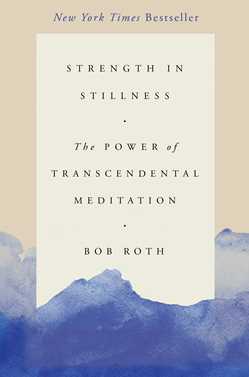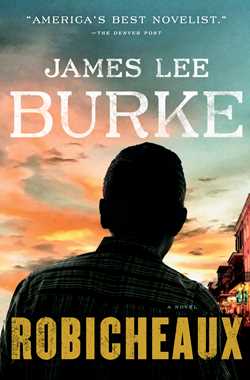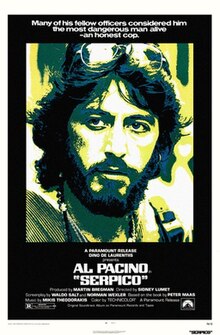Ohmmmm.
I have been practicing TM, Transcendental Meditation to some, for many years. Stress melts. Tightness dissolves. The mind opens, relaxed and rested.
I have been telling people about TM for decades. Let’s face it: Everyone we know is stressed. No matter where we come from, or what we do, stress is an epidemic that threatens our mental, physical, emotional, and spiritual health. While there is no cure, there is a simple practice that dramatically changes how we respond to life’s challenges: the Transcendental Meditation technique. This 5,000 year‑old technique has a clear impact on our 21st century problems.

Ohmmmm.
I have been telling people about TM for decades. But instead an introduction to Bob Roth. The co‑founder and vice president of the David Lynch Foundation has studied and taught Transcendental Meditation for more than 40 years. Once a skeptic, he is now one of the most experienced and sought‑after experts in the world. He has brought TM to millions of people, working not only with celebrities and business leaders, but also with inner‑city schools, veterans’ hospitals, women’s shelters, HIV/AIDS clinics, and prisons. Medical experts agree that the epidemic of stress is damaging our physical and emotional health at younger and younger ages. While there is no one single cure, the Transcendental Meditation technique is a simple practice that dramatically changes how we respond to stress and life’s challenges.
In Strength in Illness: The Power of Transcendental Meditation ($24), Roth breaks down the science behind meditation in a new, accessible way. He highlights the three distinct types of meditation—focused attention, open monitoring, and self-transcending—and showcases the evidence that Transcendental Meditation is the most effective way to reduce stress, access inner power, and build resilience. The book is so free of gimmicks, mystical verbiage and over‑inflated research studies.
Roth’s clients include Oprah Winfrey, Jerry Seinfeld, Ray Dalio, Ellen DeGeneres, Howard Stern, Tom Hanks and Gisele Bündchen. Another client: Gwyneth Paltrow, who calls the book “the simplest, most engaging, and easiest-to-understand guide to Transcendental Meditation.”
All together now: Ohmmmm . . .

 What’s more, their hands-off parents encourage them to simply enjoy themselves. Making it to the Olympics is seen not as the pinnacle of an athlete’s career but as a fun stop on the way to achieving other, longer-lasting dreams. Norwich, Crouse realized, wasn’t just raising better athletes than the rest of America; it was raising happier, healthier kids.
What’s more, their hands-off parents encourage them to simply enjoy themselves. Making it to the Olympics is seen not as the pinnacle of an athlete’s career but as a fun stop on the way to achieving other, longer-lasting dreams. Norwich, Crouse realized, wasn’t just raising better athletes than the rest of America; it was raising happier, healthier kids. During a murder investigation, Robicheaux discovers he may have committed the homicide he’s investigating, one which involved the death of the man who took the life of Dave’s beloved wife. As he works to clear his name and make sense of the murder, Robicheaux encounters a cast of characters and a resurgence of dark social forces that threaten to destroy all of those whom he loves. What emerges is Robicheaux ($27.99), not only a propulsive and thrilling novel, but a harrowing study of America . . . the nation’s abiding conflict between a sense of past grandeur and a legacy of shame, its easy seduction by demagogues and wealth, and its predilection for violence and revenge. James Lee Burke has returned with one of America’s favorite characters, in his most searing, most prescient novel to date.
During a murder investigation, Robicheaux discovers he may have committed the homicide he’s investigating, one which involved the death of the man who took the life of Dave’s beloved wife. As he works to clear his name and make sense of the murder, Robicheaux encounters a cast of characters and a resurgence of dark social forces that threaten to destroy all of those whom he loves. What emerges is Robicheaux ($27.99), not only a propulsive and thrilling novel, but a harrowing study of America . . . the nation’s abiding conflict between a sense of past grandeur and a legacy of shame, its easy seduction by demagogues and wealth, and its predilection for violence and revenge. James Lee Burke has returned with one of America’s favorite characters, in his most searing, most prescient novel to date.




 806: A Novel takes readers on a life-changing road trip with more than a few twists and turns. Taking on the thought-provoking topic of sperm donor kids seeking their father while facing challenges and disappointments along the way, the story is balanced by its humor, newfound familial relationships, and heartfelt moments. Teens will connect with KT, Jesse, and Gabe for different reasons during their journey as they race through the book to discover how everything turns out.
806: A Novel takes readers on a life-changing road trip with more than a few twists and turns. Taking on the thought-provoking topic of sperm donor kids seeking their father while facing challenges and disappointments along the way, the story is balanced by its humor, newfound familial relationships, and heartfelt moments. Teens will connect with KT, Jesse, and Gabe for different reasons during their journey as they race through the book to discover how everything turns out.
